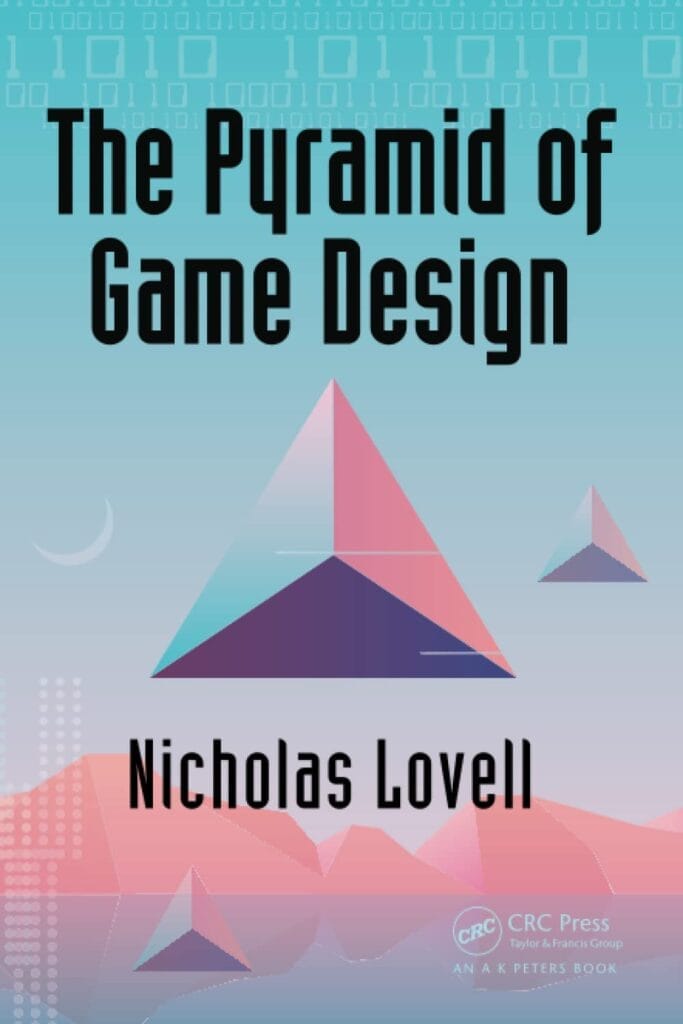The Pyramid of Game Design: Designing, Producing and Launching Service Games by Nicholas Lovell
The Pyramid of Game Design by Nicholas Lovell is a detailed guide that focuses on the design and production of service games. These are games that generate revenue over time, often through ongoing content updates, microtransactions, or subscriptions. Lovell offers a strategic framework for developers, producers, and entrepreneurs involved in the modern gaming industry.
This article provides a comprehensive summary of the book’s contents and a review synthesis based on available reader feedback. It aims to give you a clear understanding of the core principles Nicholas Lovell presents along with the reception of the book.
Key Takeaways
- Service games require ongoing engagement strategies, not just a great initial design.
- Data analytics is crucial for optimizing both gameplay and monetization.
- Cross-disciplinary collaboration ensures better game quality and player satisfaction.
- Agile production methods help adapt quickly to player feedback and market changes.
- A successful launch involves preparation, marketing, and community management.


Overview of The Pyramid of Game Design Content
What Are Service Games?
- Definition: Games designed to provide ongoing entertainment and generate continuous revenue.
- Examples: Mobile games, MMOs, and free-to-play titles with in-app purchases.
- Importance: Shift from one-time purchase to a long-term player engagement model.
The Pyramid Framework
The core concept of the book is the Pyramid of Game Design, which breaks down the creation of service games into manageable layers:
- Design Layer
- Understanding player motivation.
- Crafting engaging gameplay loops.
- Balancing mechanics for retention and monetization.
- Production Layer
- Efficient team management.
- Agile development tailored for live games.
- Iterative testing and data-driven decision-making.
- Launch Layer
- Marketing strategies for acquiring players.
- Community building for sustained engagement.
- Post-launch support and content updates.
Key Concepts Discussed
- Player Retention: Techniques to keep players returning, such as daily rewards and social features.
- Monetization Models: Free-to-play, subscriptions, and hybrid approaches.
- Data Analytics: Using player data to refine game design and optimize revenue.
- Live Operations (LiveOps): Continuous game updates and events to maintain player interest.
- Team Collaboration: Importance of cross-disciplinary communication between designers, marketers, and analysts.
Detailed Breakdown of Key Sections
1. Designing for Engagement
- Focus on player psychology — understanding what motivates different player types.
- Building core loops that are fun and rewarding.
- Avoiding pay-to-win traps while offering fair monetization options.
2. Producing Efficiently
- Agile methodologies adapted for game development.
- Prioritizing features based on player feedback and data metrics.
- Managing remote or distributed teams effectively.
3. Launching Successfully
- Pre-launch marketing tactics including soft launches.
- Leveraging community feedback post-launch.
- Planning for scalability to handle user growth.
Review Summary and Reader Feedback
Common Praise Points
- Comprehensive Framework: Readers appreciate the clear pyramid structure that makes complex processes understandable.
- Practical Advice: Many reviewers highlight actionable insights that can be directly applied to game projects.
- Industry Relevance: The book’s focus on service games reflects current trends in the gaming market.
- Data-Driven Approach: Positive comments about the emphasis on analytics and iterative improvement.
Common Criticisms
- Technical Jargon: Some readers find parts of the book dense with industry-specific terms.
- Repetitiveness: A few reviews mention that some concepts are repeated without adding new value.
- Focus on Mobile Games: A couple of readers wished for more examples beyond mobile and free-to-play titles.
Overall Sentiment
The general consensus is positive, especially among game designers and producers looking to understand service games better. The book is praised for bridging theory with practical application.
Average Score Calculation
Based on reviews collected from Amazon and other platforms:
| Source | Rating (out of 5) | Converted to 10-point scale |
|---|---|---|
| Amazon | 4.0 | 8.0 |
| Goodreads | 3.8 | 7.6 |
| Google Books | 4.2 | 8.4 |
Average Score = (8.0 + 7.6 + 8.4) / 3 = 8.0
Conclusion – The Pyramid of Game Design
The Pyramid of Game Design by Nicholas Lovell is a valuable resource for anyone involved in the development of service games. It provides a structured approach to designing, producing, and launching games that can sustain player interest over time and generate ongoing revenue. While some readers may find the technical aspects challenging, the book’s practical advice and relevant examples make it a recommended read for professionals in the gaming industry.
If you want a more detailed section or specific examples from the book, let me know!
[ad_2]


















